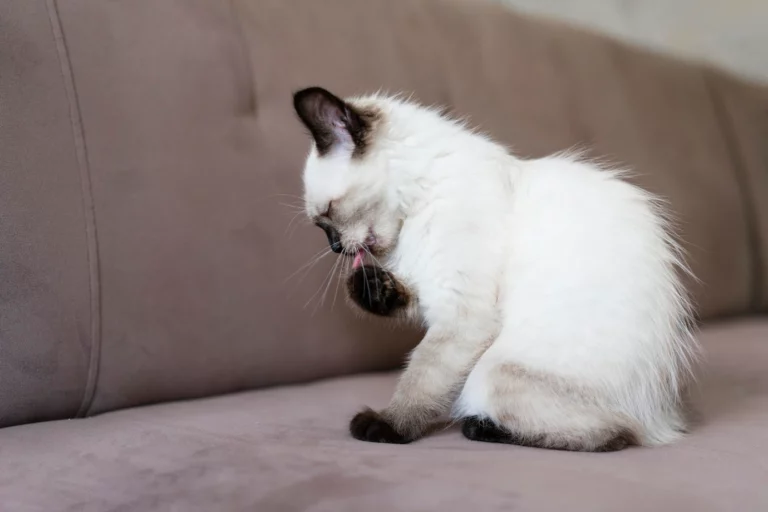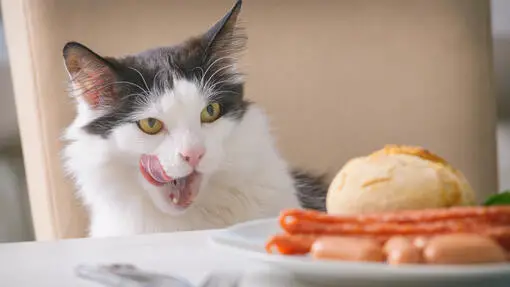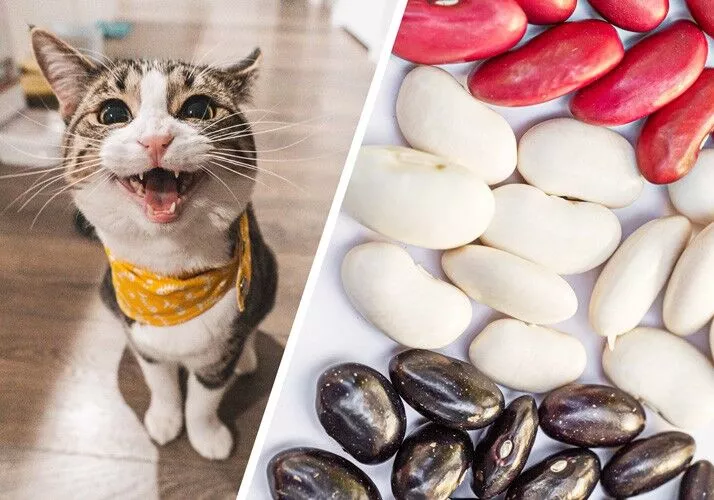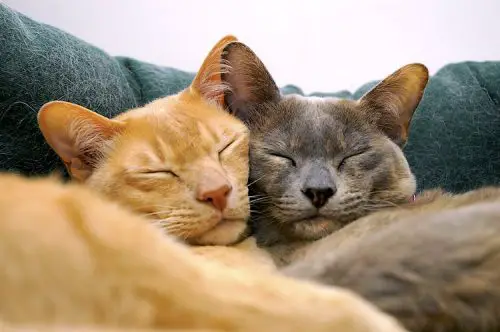Why Does My Cat Have a Big Nose?
Short Answer: The primary reason why a cat might have a big nose encompasses a blend of genetic predispositions, specific breed characteristics, and, in some instances, underlying health conditions that may influence the size and shape of the nose.
Key Takeaways:
- Exploration of genetic and breed-specific factors influencing nose size.
- Insight into potential health issues related to big noses in cats.
- A dive into various cat breeds known for their prominent noses.
- Understanding the care and health implications for cats with larger noses.
- Addressing frequently asked questions regarding cats and their noses.
A cat’s nose can be a captivating feature, often sparking curiosity and myriad questions from their human companions.
Whether it’s a characteristic of a particular breed, a genetic trait passed down through generations, or a health-related anomaly, the reasons behind a cat’s big nose can be as varied as the cats themselves.
In this exploration, we’ll delve into the fascinating aspects of our furry friends’ notable noses, ensuring to navigate through the realms of genetics, health, and care, providing a comprehensive guide for cat enthusiasts and curious minds alike.
Understanding Cat Nose Shapes
Roman Nose
The Roman nose, often recognized as a distinguished feature in certain cat breeds, is characterized by its slightly arched shape, creating a subtle, noble curvature that extends from the forehead to the tip.
Cats with a Roman nose often exhibit a profile that is not entirely straight, providing a regal and somewhat pronounced facial structure.
This nose shape is not merely a physical trait but is also often associated with specific breed personalities, where the cats might exhibit a calm, dignified demeanor, aligning with their noble appearance.
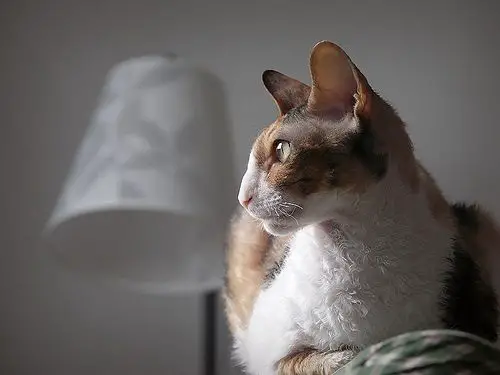
No products found.
Nose Break, Snub Nose, and Straight Nose
Navigating through the various nose shapes in cats, we encounter a spectrum of intriguing distinctions.
The Nose Break refers to the slight bend or indentation in a cat’s profile, often seen in breeds like Persians, providing them with a unique, pushed-in appearance.
On the other hand, a Snub Nose, often found in breeds like the Exotic Shorthair, exhibits a noticeably short and upturned shape, offering a somewhat puckish charm to their facial expression.
Contrarily, the Straight Nose presents a linear profile from the forehead to the nose tip, commonly seen in breeds like the Russian Blue, offering a sleek and streamlined aesthetic to their visage.
Each nose shape, while providing a visual distinction, does not generally impact the cat’s personality but does contribute significantly to the overall appearance and breed standard.
The Genetics Behind Big Noses in Cats
Inheritance and Breeding
The physical traits that a cat displays, such as a notably large nose, are often a direct result of genetics, as well as inheritance and breeding practices. Genetic traits, including nose size and shape, are passed down from parent to offspring through genes.
Breeders, particularly those focusing on specific breeds or physical characteristics, may selectively breed cats with larger noses to ensure that the trait is prominently featured in subsequent generations.
This practice, while enhancing certain physical attributes, also necessitates a mindful approach to avoid potential health issues that might arise from a limited gene pool. Thus, understanding and navigating the genetics behind these adorable big noses require a blend of scientific understanding and ethical breeding practices.
No products found.
Big Nose Cat Breeds
Exploring beyond the commonly discussed breeds, let’s delve into the Bengal and Turkish Van breeds, which also exhibit notable nose features, yet are not typically highlighted in discussions about big-nosed cats.
- Bengal: Known for their wild appearance and strikingly beautiful coat patterns, Bengals also sport a wide, puffy nose that adds to their exotic charm. Their noses are often broad and large, aligning with their robust and athletic build.
- Turkish Van: Recognized for their semi-long, lush coats and distinct color patterns, Turkish Vans also present a sturdy nose structure that complements their strong, muscular bodies.
Cat with Wide Nose Bridge
Cats with a wide nose bridge often exhibit a facial structure that provides a robust and sturdy appearance. This feature, while physical, can sometimes be associated with certain breeds more than others, offering a distinctive look that can be both endearing and breed-defining.
Roman Nose Cat
As previously discussed, the Roman nose cat carries a gentle, arching nose that provides a noble and distinguished appearance, often associated with a calm and dignified demeanor, seamlessly blending physical traits with personality nuances.
Big Nose Cat Breed
The term big nose cat breed might encompass various breeds where a larger nose is a prominent feature, such as the Maine Coon or Persian, each bringing their unique charm and personality to the table, alongside their notable noses.
Cat Breed with Big Nose and Ears
Exploring the cat breed with big nose and ears, the Cornish Rex comes to mind, with its large ears, prominent nose, and a playful, affectionate demeanor.
Their notable physical traits, combined with their spirited and friendly personalities, make them a delightful companion, ensuring that their physical and personality traits are celebrated in equal measure.
Health Implications of Big Noses
Breathing Issues
Navigating through the health landscape of cats with big noses, breathing issues can emerge as a point of concern for pet parents. A cat with a notably large nose might, in some instances, experience obstructed airways or difficulties in achieving optimal airflow.
This could be due to the physical structure of the nose, where the larger size might impact the nasal passages and their functionality.
It’s imperative to observe any signs of respiratory distress, such as rapid breathing, wheezing, or frequent sneezing, and to seek veterinary advice should these symptoms persist, ensuring that any potential breathing issues are addressed promptly and effectively.
Infections and Tumors
Infections and tumors can significantly impact the size and shape of a cat’s nose, sometimes leading to a noticeable enlargement or alteration in its appearance. Infections might cause swelling or discharge, while tumors, whether benign or malignant, could alter the nose’s shape or size.
Regular check-ups and keen observation of any changes in the nose’s appearance or functionality are crucial. Noticing alterations like persistent nasal discharge, changes in color, or unusual growths should prompt a visit to the vet to ensure that any infections or tumors are identified and treated at the earliest.
Veterinary Interventions
In certain scenarios, veterinary interventions might be considered to address issues related to a cat’s big nose. Surgical corrections, for instance, might be explored in instances where the size or shape of the nose is significantly impacting the cat’s quality of life or overall health.
This could range from procedures to improve airflow through the nasal passages to removing tumors or addressing other health concerns that might arise due to the nose’s size or shape.
It’s crucial that any surgical considerations are approached with a thorough understanding of the potential risks and benefits, ensuring that the cat’s health and wellbeing remain at the forefront of any medical decisions.
Caring for Cats with Big Noses
Grooming and Health Care
Embarking on the journey of grooming and health care for big-nosed cats, it’s pivotal to consider the unique needs that may arise due to their distinctive facial structure.
Grooming around the nose area might require gentle cleaning to ensure that no debris or discharge accumulates, potentially causing discomfort or health issues. Utilizing soft, damp cloths to gently wipe around the nose, especially for breeds with folds or creases, ensures a clean and comfortable facial environment.
Additionally, regular veterinary check-ups to monitor their nasal health, ensuring that any potential issues related to their prominent noses are identified and addressed promptly, are vital.
Tailoring health care routines to accommodate their unique physical traits ensures that big-nosed cats are not only well-groomed but also healthy and happy.
Diet and Exercise
When it comes to diet and exercise, a big nose might introduce certain considerations into how a cat approaches its food and physical activities. For instance, the shape and size of their nose might necessitate specific types of feeding bowls to ensure comfortable and easy access to their food.
Opting for wide, shallow dishes can facilitate easier eating while preventing their large noses from obstructing their feeding process.
In terms of exercise, while their nose might not directly impact their physical activity, ensuring that they engage in regular play and movement is crucial for maintaining optimal health, particularly if their breed is prone to specific health issues.
Engaging in activities that promote healthy breathing and provide ample opportunities for exploration and play ensures that their physical and mental well-being is nurtured, providing a holistic approach to their care.
FAQs: Addressing Common Concerns
Why does my cat’s nose look big?
The appearance of a big nose in cats can be attributed to a variety of factors, including genetic predispositions, specific breed characteristics, and in some instances, health conditions that might influence the size and shape of the nose.
Certain breeds naturally have larger, more prominent noses as a standard feature, while in other instances, a big nose might be a unique trait of an individual cat.
Why does my cat have a Roman nose?
A cat may have a Roman nose due to its breed or genetic lineage. The Roman nose, characterized by a gentle curve in the profile, is often associated with certain breeds and can be inherited from parent cats.
It’s a physical trait that is often admired for its regal appearance and can be found in various breeds, adding to their distinctive and noble aesthetic.
What does an unhealthy cat nose look like?
An unhealthy cat nose might exhibit various signs such as persistent discharge, unusual color changes, visible growths, or constant sneezing. Additionally, any noticeable alteration in the size, shape, or general appearance, such as swelling or asymmetry, might indicate an underlying health issue.
It’s crucial to consult with a veterinarian if any of these signs are observed to ensure accurate diagnosis and appropriate care.
What does a cat’s nose tell you?
A cat’s nose can provide insights into its health and mood. A healthy nose is typically moist and cool, however, variations can be normal. For instance, a warm, dry nose doesn’t necessarily indicate illness, as a cat’s nose can change throughout the day.
Notable changes in texture, color, or discharge should be monitored. Additionally, the nose can also indicate curiosity or engagement, with cats often exploring their environment by sniffing various objects and areas.
Conclusion
Embarking on a journey through the world of cats and their distinctive noses, we’ve explored the facets of feline nasal characteristics, from genetics and breed-specific traits to health implications and care considerations.
Our exploration intertwines physical, health, and care aspects, providing a comprehensive understanding of our varied and beautiful feline friends. Celebrating each unique nose, we emphasize mindful care, attentive observation, and a loving approach to nurture their wellbeing.
In their whiskered smiles and gentle purrs, we find a world of love and companionship, inviting continuous exploration and cherishing of our time with these beautiful creatures.
Additional Resources
Links to Vet Services
Ensuring your cat receives the best possible care is paramount. For professional advice and services, consider exploring the following vet services:
- ASPCA Veterinary Services: Offering a range of services and resources for pet owners.
- VCA Hospitals: Providing professional veterinary services across various locations.
- Banfield Pet Hospital: Offering veterinary health solutions and services.
Always ensure to choose a vet service that aligns with your pet’s needs and your location for optimal care and support.
Further Reading
For those keen to delve deeper into the world of cats, their breeds, and care, consider exploring the following resources:
- “The Cat Behavior Answer Book” by Arden Moore: A comprehensive guide exploring the various aspects of cat behavior and offering insights into understanding and caring for them.
- “Cat Sense: How the New Feline Science Can Make You a Better Friend to Your Pet” by John Bradshaw: A book that provides scientific insights into understanding your cat better.
- “The Complete Cat Breed Book” by DK: Offering a thorough guide into various cat breeds, their characteristics, and care tips.
- International Cat Care: A website offering a plethora of resources, articles, and guides on various aspects of cat care, health, and behavior.
These resources provide additional insights and information, ensuring that your journey through understanding and caring for your cat is well-informed and enriched with knowledge and support.
Comment Section
Welcome to our cozy corner of cat conversations! We invite you to share your thoughts, experiences, and any whisker-twitching tales you might have about your feline friends and their notable noses.
Whether you have a curious kitty with a wide nose bridge or a regal feline showcasing a noble Roman nose, your stories enrich our community and weave into the tapestry of shared experiences and knowledge.
As we navigate through the comments, let’s ensure that our discussions remain respectful, supportive, and inclusive, honoring each shared story and experience with kindness and curiosity.
Whether you’re sharing tips, seeking advice, or simply wanting to showcase your beautiful big-nosed kitty, we’re here to share in your journey, providing a platform that celebrates our collective love and appreciation for all things feline.
Please remember that while our community is a wonderful space for sharing and learning, it is not a substitute for professional veterinary advice. For any health-related concerns or queries, always consult with a qualified veterinarian to ensure accurate and safe information.
Let’s continue to nurture a community that supports, learns, and grows together, ensuring that each comment, story, and shared experience is met with open arms and a warm, welcoming purr.
We look forward to reading your stories, answering your questions, and sharing in the delightful world of cats and their enchanting noses.
Disclaimer
It’s important to acknowledge that while this exploration provides insights, stories, and general advice, it does not substitute professional veterinary guidance.
The information, experiences, and general advice shared throughout this blog post are intended to enhance our understanding and appreciation for our feline companions in all their varied and beautiful forms and are not meant to replace specific, professional advice regarding health, care, or any other specialized field.
For any health-related concerns, queries, or needs, always consult with a qualified veterinarian to ensure that your feline friend receives the accurate, safe, and professional care they deserve.
While our exploration into the world of big-nosed cats provides a general guide and shared experiences, individual cats may have specific needs, concerns, and conditions that require professional attention and care.
Let’s continue to explore, share, and cherish our feline friends, ensuring that their health, wellbeing, and care are always prioritized, and that professional advice is sought when needed, safeguarding their wellbeing as we navigate through the enchanting and diverse world of cats and their notable noses.

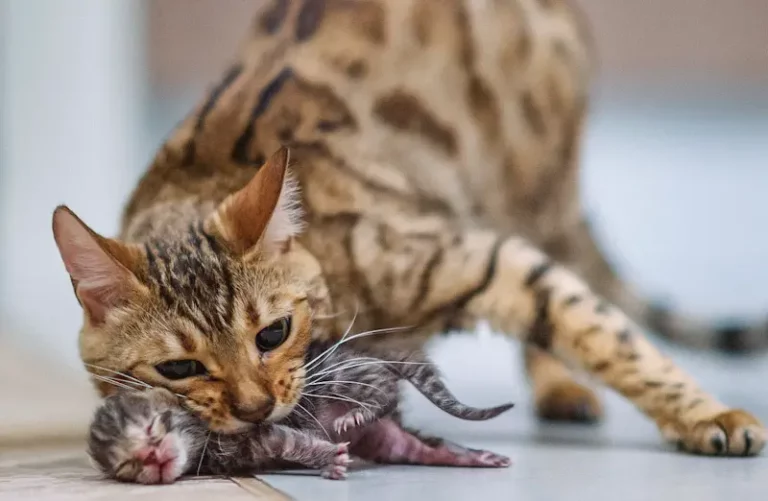
![How Do Cats Choose Who To Sleep With? [5 Factors]](https://www.warmlypet.com/wp-content/uploads/2023/03/why-cat-like-to-sleep-with-owners-768x432.webp)
